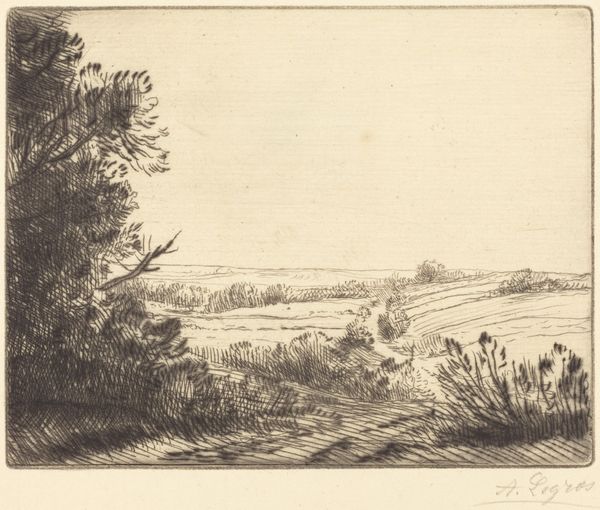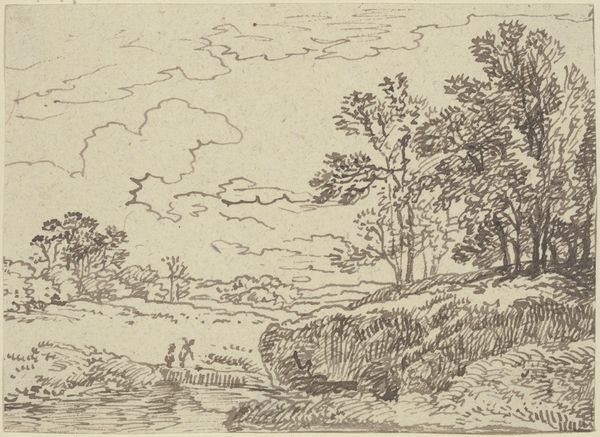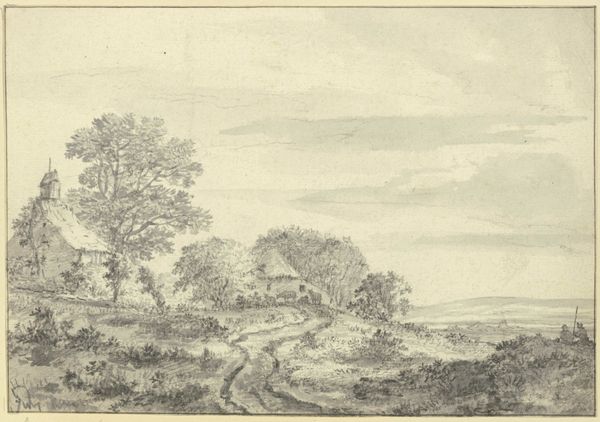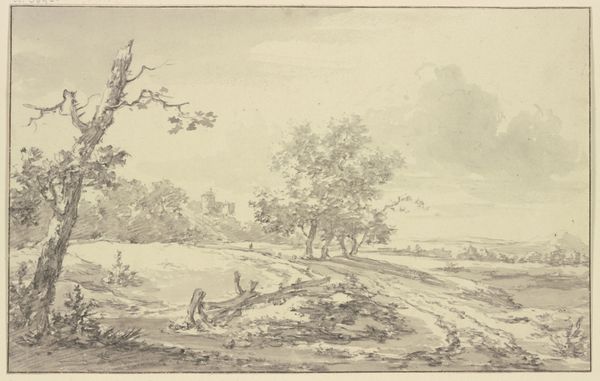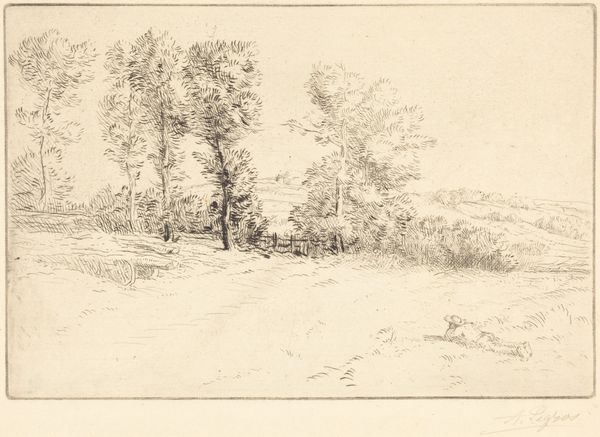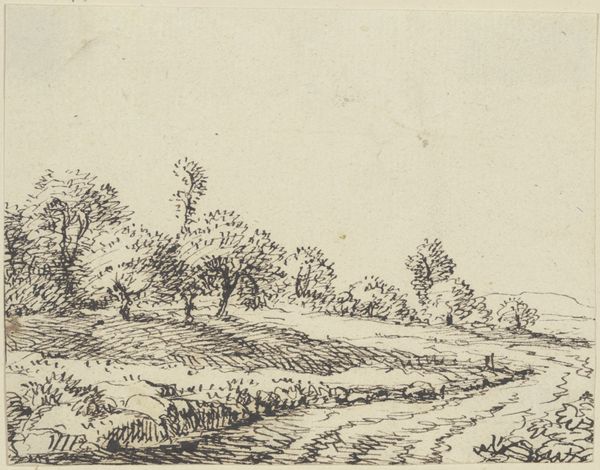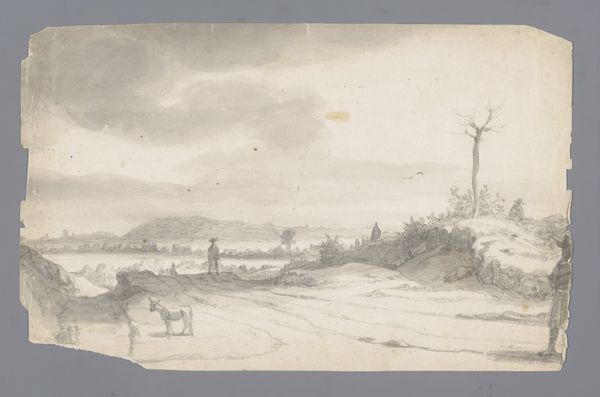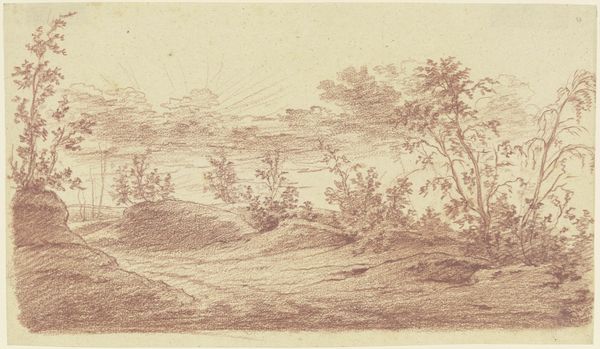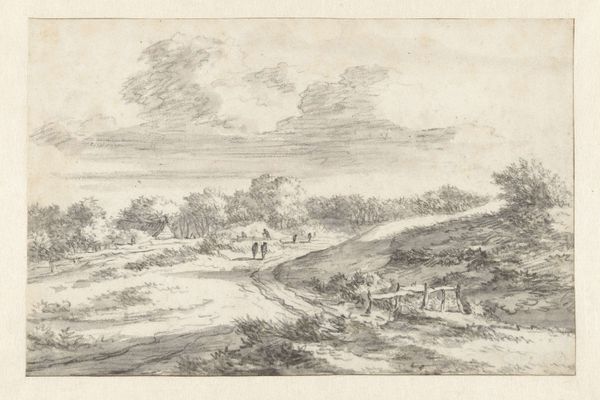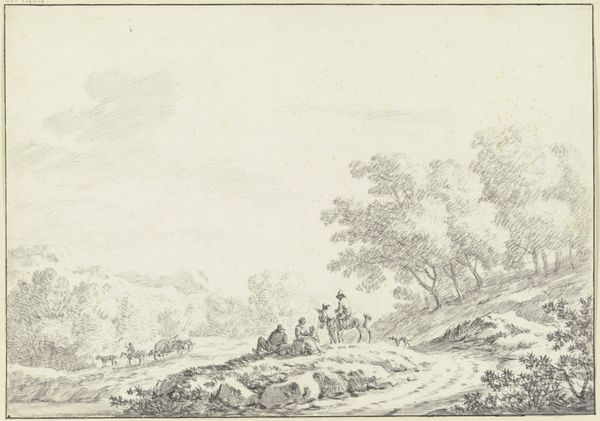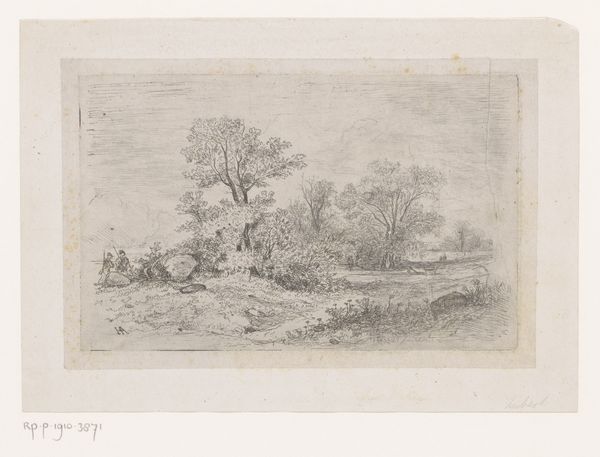
Landschaft mit Fernsicht, links Bäume, auf dem Weg eine Schafherde
0:00
0:00
drawing, ink, indian-ink, graphite, pen
#
drawing
#
baroque
#
landscape
#
etching
#
ink
#
indian-ink
#
pen-ink sketch
#
15_18th-century
#
graphite
#
pen
#
watercolor
Copyright: Public Domain
Curator: This is "Landscape with Distant View, Trees on the Left, a Flock of Sheep on the Way", a pen and ink drawing with graphite and watercolor attributed to Gerard van Nijmegen, though its exact date is unknown, we estimate it to have been produced sometime in the 18th century. Editor: The subdued color palette and the artist's delicate use of line give the scene a sense of quiet solitude, almost melancholy. It makes me think of rural life and how intrinsically that connects to notions of labor, agrarian societies, and class structures during the Baroque era. Curator: Precisely. Think about the material production here: paper, ink, graphite. These weren’t just readily available. The rise of the merchant class and increased trade during this time shaped access to these art supplies, creating conditions in which landscape drawing like this could even become a practiced genre. The tools themselves became a silent marker of privilege. Editor: And what about the subject of the work itself, though? The sheep, the shepherd... We can't overlook the power dynamics embedded in this seemingly simple scene. Who owned the land? Who profited from the sheep’s wool? Consider how the art romanticizes agrarian life while obscuring the realities of land ownership and exploitation that characterized the period. The picturesque is always constructed, never neutral. Curator: Absolutely. Looking closer at the process, notice how van Nijmegen builds up layers of wash and delicate hatching to create depth and atmosphere. This speaks to an evolving market of artistic techniques and skills designed to render landscape more palatable for patrons. Consider the skilled labor necessary for him to become so proficient at this delicate art. Editor: Right, and while admiring technique is important, this focus on technical prowess also, potentially, elevates the artist, often male, to the level of a singular genius. This perspective erases the contributions of others. How were gender and labor structured in his workshop or larger artistic community? Were women excluded, or were their contributions minimized, such as in the preparation of pigments or support materials? These are considerations we can bring to the discussion around labor. Curator: Fascinating points. Thinking about the way consumption relates here, how would this drawing have circulated? How did art function within these emerging systems of exchange? Was the intention purely for viewing pleasure, or was it for land surveying, a way to create revenue, or something else? Editor: Those questions, and what they unearth, is the kind of discourse that keeps our history vital. Curator: Agreed, these subtle visual documents are rich in texture, which invite our audiences to bring forth fresh observations that link the drawing to broader, urgent discussions about social life and conditions during this timeframe.
Comments
No comments
Be the first to comment and join the conversation on the ultimate creative platform.

